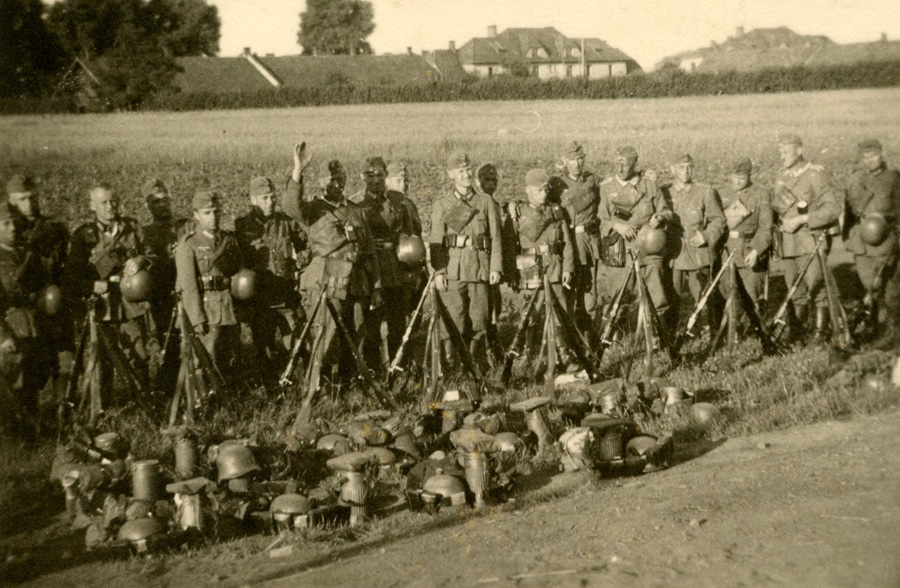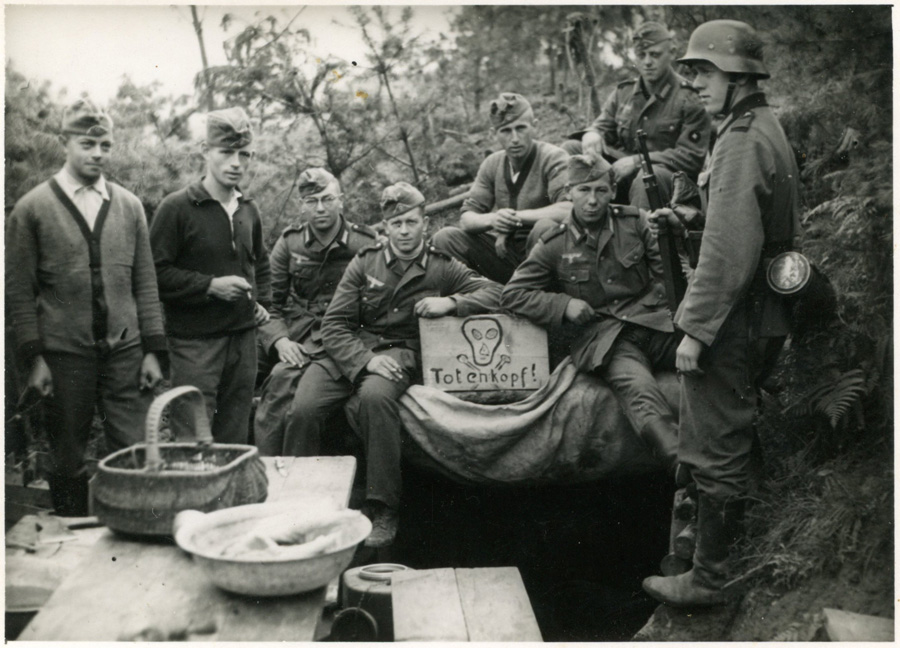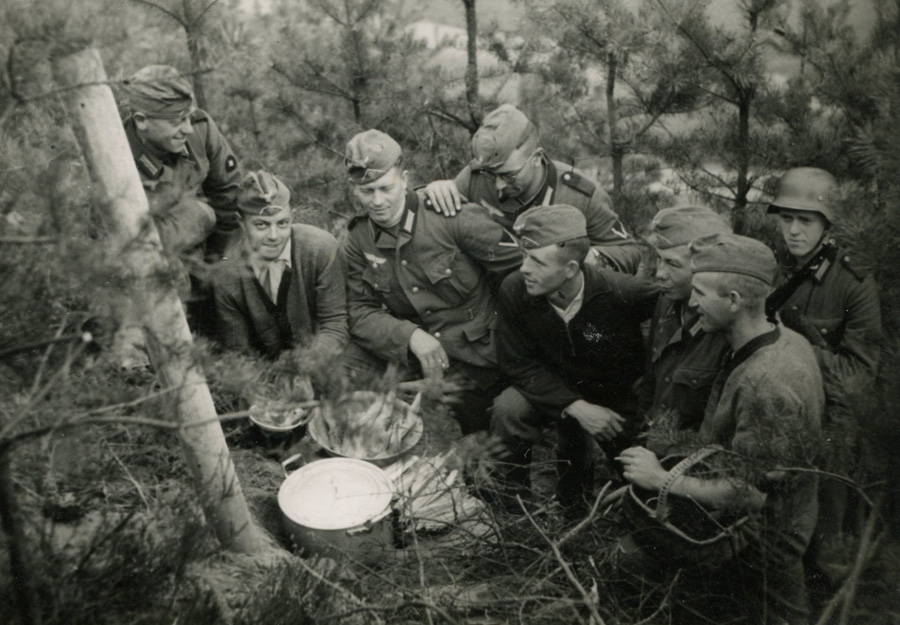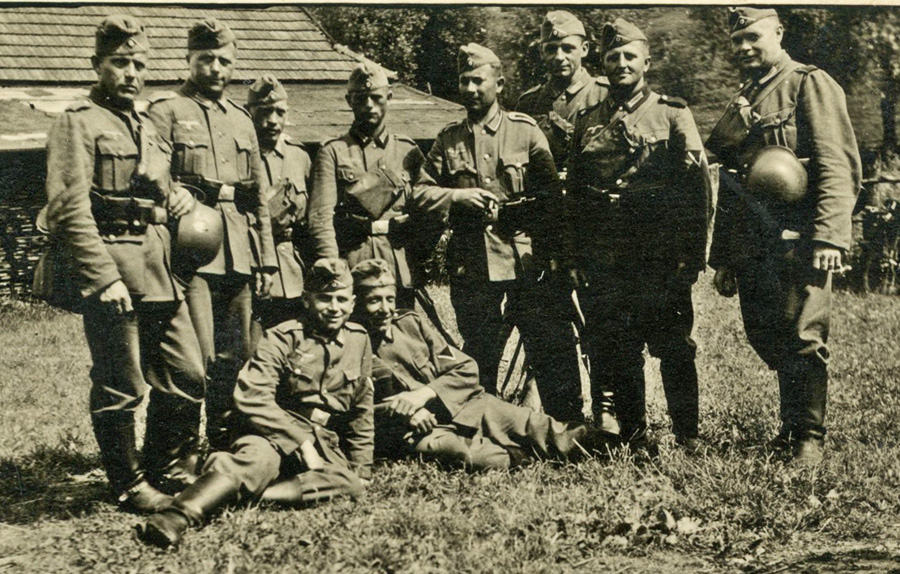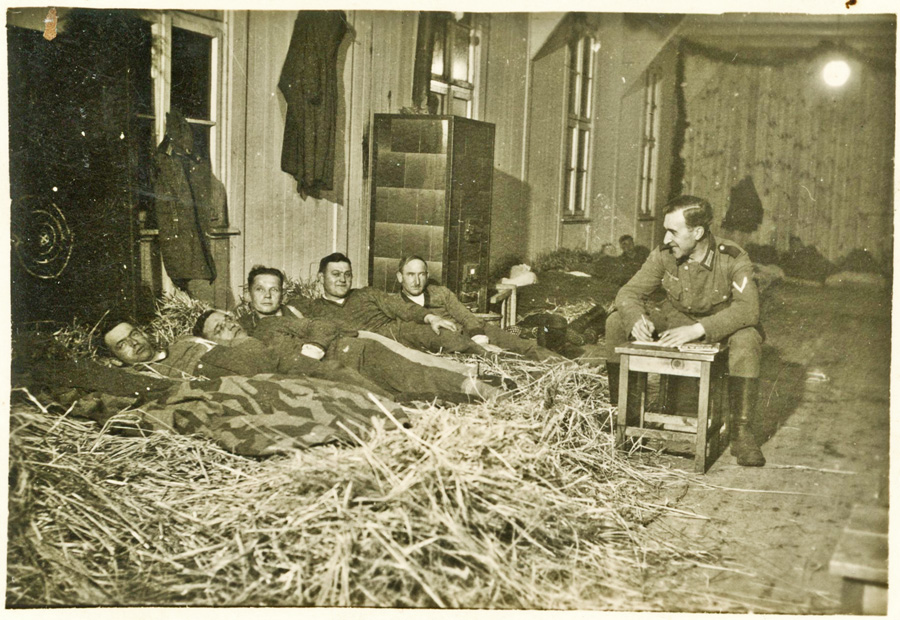
Sicherung (Security) units are an unheralded but nonetheless important part of the historiography of the German military machine during the Second World War. The years 1939-42 are generally defined as a period of military and territorial expansion for The Third Reich. As a fluid frontline expanded, particularly East into the Soviet Union, the Wehrmacht’s supply lines quickly stretched and the role of the Sicherung unit became clearly defined. These special units discharged the critical task of guarding supply, communication, and transportation networks over vast expanses of new territory. In this way the Sicherung units formed part of the crux of the German military. These units existed throughout the Second World War and served on every front.
Unlike their front-line counterpart units, Sicherung units languished as an afterthought in terms of the priorities of the high command. With the ever-present need for fresh weapons, crack troops, vehicles, food, and equipment focused on the hundreds of combat divisions constantly engaged with the enemy, Sicherung units fell to the lowest levels of the supply chain. Frequently undermanned and underequipped the Sicherung units were nonentheless assigned the ironic task of ensuring the sustained operations of larger supply chains while simultaneously conducting their own ongoing battle with lethal partisan forces and resistance groups on all fronts. Rapid mobility was non-existent for the Wehrmacht’s Sicherung units as quality vehicles, along with the fuel and repair equipment to sustain them, were diverted elsewhere. The subsequent combination of fighting local militia groups while attempting to secure vast areas with woefully inadequate supply contributed to conspicuously low espirit-de-corps within these units.
Further distinguishing the Sicherung units from their counterpart combat units was a stark difference in quality of manpower. As waves of trained, youthful troops went forward to fight at the front, combat-ready troops were simply unavailable to carry out rear-line security. Consequently, Sicherung units were comprised primarily of former garrison troops, Landeschützen (terrirorial guard) troops, and aged veterans. Incompetent officership was rampant in these units, further compounding the manpower situation. When faced with combat situations disabilities in manpower, equipment, and leadership resulted in appalling casualties. Sicherung units, particularly in the latter stages of the war, often received orders to directly support the front line as patching forces. Sometimes the security troops performed admirably but, in other cases, these disadvantaged units suffered tremendous losses including complete annihilation.
In addition to guarding supply lines, and carrying out rear area suppression of partisans, Sicherung units often found themselves assigned to other tasks such as regulating military and civilian traffic and managing prisoners-of-war. As the military frontier increased so did the scope of burden of these various functions. In July 1941 one such unit, Sicherungs-Division 221, found itself responsible for securing an area of 35,000 square kilometers comprising 2,560 villages and 1,300,000 local inhabitants. As time passed this situation became commonplace and the only practical function of the Sicherung units was passive security during which security troops could not operate offensively against threatening militia or partisan groups. These unfortunate men faced a bleak and terrifying reality of defensive operations against long odds.
History commonly remembers the Wehrmacht of the Second World War as a highly-mobile, highly-equipped army of fanatical shock troops able to easily defeat their opponents. The real story of the Sicherung units helps to bring a different reality into the historical discourse. In the reality of the Second World War logistics and interference from militia fighters proved decisive in numerous campaigns. The war was not carried out solely by the youthful members of the generation, even the aged found themselves forced into harm’s way during a massive national emergency. The unprecedented build-up of the German military and the territorial borders of The Third Reich gave rise to predictable shortages of supply on both the military- and home-fronts. The story of the Sicherung units is undeniably intertwined with the grim reality of all-out conflict of the Second World War.
The photos on this page are from the estate of Gefreiter Wilhelm Wagner, a soldier who served in Russia with Sicherungs-Regiment 46.
